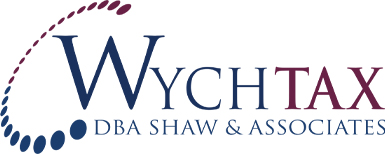2015 Tax Planning
Kevin Shaw
Shaw & Associates, CPA
 I know it is hard to believe but 2015 is rapidly coming to a close. This is the time of the year that many of my clients are setting appointments to get a better idea of what their projected tax burden for 2015 is going to be and to identify areas where they can minimize their taxes. I like to use our October newsletter to encourage early tax planning, since once the year is over there are few opportunities to take steps to lower your current taxes. In this regard, I am going to identify a couple of the more common strategies you can consider, but since everyone’s tax situation is different you may want to meet with your tax advisor before the end-of-the-year to create a plan tailored to your situation.
I know it is hard to believe but 2015 is rapidly coming to a close. This is the time of the year that many of my clients are setting appointments to get a better idea of what their projected tax burden for 2015 is going to be and to identify areas where they can minimize their taxes. I like to use our October newsletter to encourage early tax planning, since once the year is over there are few opportunities to take steps to lower your current taxes. In this regard, I am going to identify a couple of the more common strategies you can consider, but since everyone’s tax situation is different you may want to meet with your tax advisor before the end-of-the-year to create a plan tailored to your situation.
1. Accelerate Deductions & Delay Income – Since most individuals and small businesses are cash-basis taxpayers, the timing of when you pay for tax deductions and when you receive income can have a significant impact on your final tax bill. The general rule of thumb is to accelerate payment of items that could create tax deductions and to delay receipt of income that would increase taxes. You would be surprised at how simple some of these can be such as paying your mortgage due January 1st in December, prepaying property taxes, paying for college tuition in December instead of in January, accelerating business deductions, etc. You could also delay receipts of bonuses, if your employer would agree, or delay collection on customer receivables. The important thing is to not make these decisions until you fully understand your tax situation. If, for instance, 2015 is a low income year as compared to what you believe will be a higher income year for 2016, you may actually want to accelerate revenues and delay deductions the reverse to push more of the income into the current year when your marginal tax bracket is lower.
2. Medical Deductions – Since medical deductions are only deductible if in excess of 10% of your Adjusted Gross Income (AGI), a good strategy is to “bunch” your medical expenses into one year as opposed to spreading them out over several years. If you incurred significant medical expenses in 2015 and will exceed your floor, you would want to consider accelerating medical procedures into 2015. Medical expenses include dental, eye doctor, chiropractors, etc. Conversely, if you had very few medical expenses to date in 2015, you may want to defer as much as you can to 2016 when there may be an opportunity to bunch. As a quick example, if your AGI is $50,000, your medical floor is $5,000. If you have already reached that floor or are close, you would accelerate 2016 medical deductions to make them deductible in 2015. If you wait, you could have $5,000 of medical expenses in both years and none of it deductible due to AGI limits in both years.
3. Long-Term Capital Gains – This is one of my favorite strategies and can generate significant tax savings. Many people do not realize that if you are in the 15% marginal tax bracket or lower, any long-term capital gains from the sale of securities, real estate, etc, are taxed at 0% until the 25% marginal tax bracket is reached. A married couple filing jointly with taxable income (after itemizing deductions and personal exemptions) below $74,900 are taxed at 15% or lower. As a simple example if you have gross wages of $50,000 and itemized deductions and personal exemptions of $20,000, your taxable income is $30,000. You could generate $44,900 of long-term capital gains and pay no additional taxes. If you have an investment portfolio, you should definitely look at this every year.
4. Roth and Traditional IRAs – This is an area that really impacts your long-term financial goals and objectives. One of the most frequent questions we get is whether to make contributions to an IRA and, if so, whether to contribute to a Roth IRA or a Traditional IRA. This is truly specific to the individual and there are so many different scenarios that impact the decision. Some of the questions relate to comparing the short-term benefit of a current tax deduction from contributing to a Traditional IRA vs. the long-term benefits of not paying taxes on withdrawals of Roth contributions or earnings. There are other things to consider as income limitations can put you into a situation where you are paying a penalty for making contributions when you should not have. Although the decision to make these contributions can be delayed until the April 15th tax deadline it is better to address this early so that you do not find yourself trying to make decisions under a tight tax deadline.
These are but a few of the many areas we discuss with our clients. The more complex your tax situation is (own businesses, rental real estate, have stock options, etc.) the more important it is to have a tax planning meeting with your tax advisor. If you believe we can be of assistance, please contact Kayla at (970) 223-0792 or email kayla@kevinshawcpa.com to schedule your appointment.





